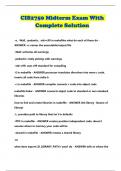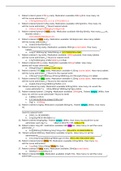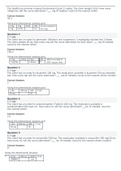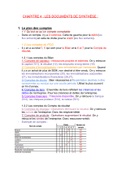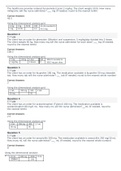Fourier Transforms
Introduction
A periodic signal can be analysed into its harmonic
components by calculating its Fourier Series. If the
period is P, then the harmonics have frequency n/P,
where n is an integer.
The Fourier Transform generalises this idea to
functions that are not periodic; the ‘harmonics’ can
have any frequency.
Fourier Series
A function f(x) with period P (ie: f(x + P) = f(x) for
all x) can be written as a Fourier Series
¥ ¥
1
f (x ) = a 0 + å an cos(kn x ) + å bn sin(kn x ) (*)
2 n =1 n =1
Where kn = 2pn / P is the wavenumber of the nth
harmonic and
2
P òover one period
an = f (x )cos(kn x ) dx
2
bn = ò f (x )sin(kn x ) dx
P over one period
This can be proved by multiplying both sides of (*) by
cos(kn x ) and sin(kn x ) , integrating over a period and
using the orthogonality relations:
ò one period
sin(kr x )cos(k p x ) dx = 0 " r, p
ì
ï 2L
1
r =p>0
ï
òone period sin(k r x )sin(k p x ) d x = í
ï
ï 0 otherwise
î
ì
ï L r =p=0
ï
ï
ï1
òone period cos(kr x )cos(kpx ) dx = íïï 2 L r =p>0
ï
ï 0 r¹p
ï
î
It saves time to remember that
o For even functions, all the bn = 0.
Maths Revision Notes © Daniel Guetta, 2007
, Page 2 of 7
o For odd functions, all the an = 0.
Fourier Series can also be found by differentiation and
integration:
o Integrating or differentiating a Fourier series
term-by-term leads to the differential or the
integral of the original function.
o It is important to remember the arbitrary
constant when integrating.
o When integrating, the result will include an ‘x’
term. This means that the expression isn’t,
strictly speaking, a Fourier series. An
alternative expression needs to be found for the
x term (perhaps by differentiating…)
If we define
ì
ï
ïa-n + ib-n n <0
1ï
ï
cn = ïí a0 n=0
2ï
ï
ï
ï a - ibn n>0
ï n
î
Then we can express our results more simply in terms
of a complex Fourier series:
¥
f (x ) = åce
n =-¥
n
ikn x
(#)
Where kn is as above, and
1
cn = ò f (x )e -ikn x dx
P one period
If f(x) is real, then c-n = cn* .
This can be proved by multiplying both sides of (#)
by e -ikn x , integrating over a period, and using the
following orthogonality relation:
1
ò
P one period
e i (kn -km )x dx = dmn
Fourier Transforms
Consider the complex forms of Fourier series, which
can be written as follows:
Maths Revision Notes © Daniel Guetta, 2007

